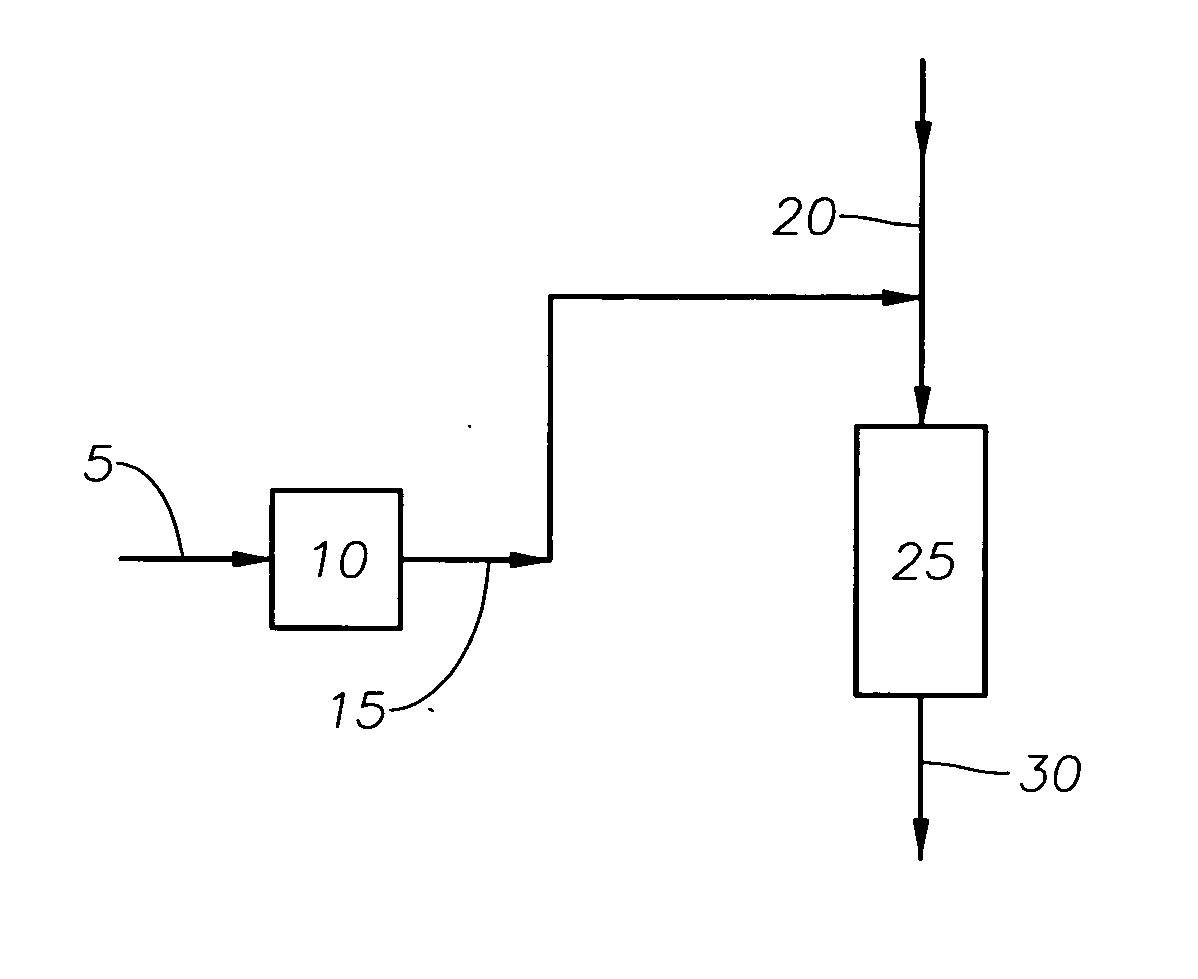Olefin production from steam cracking using process water as steam
- Summary
- Abstract
- Description
- Claims
- Application Information
AI Technical Summary
Benefits of technology
Problems solved by technology
Method used
Image
Examples
Embodiment Construction
[0013] These and other needs in the art are addressed in one embodiment by an inventive process for making olefins. The invention relates to a process for making olefins in a naphtha steam cracker using steam derived from at least a portion of a water comprising dissolved organic compounds and in a manner effective to convert at least a portion of the dissolved organic compounds simultaneously with naphtha components to valuable products, particularly olefins.
[0014] The process comprises producing steam from at least a portion of a water comprising organic compounds, such that the steam includes some organic compounds; feeding the steam and a hydrocarbon stream comprising light hydrocarbons into a steam cracker; and cracking in the presence of the steam under suitable cracking conditions at least a portion of the light hydrocarbons and at least a portion of the organic compounds from the steam to produce a steam cracker effluent comprising one or more olefins.
[0015] The water comp...
PUM
 Login to View More
Login to View More Abstract
Description
Claims
Application Information
 Login to View More
Login to View More - R&D
- Intellectual Property
- Life Sciences
- Materials
- Tech Scout
- Unparalleled Data Quality
- Higher Quality Content
- 60% Fewer Hallucinations
Browse by: Latest US Patents, China's latest patents, Technical Efficacy Thesaurus, Application Domain, Technology Topic, Popular Technical Reports.
© 2025 PatSnap. All rights reserved.Legal|Privacy policy|Modern Slavery Act Transparency Statement|Sitemap|About US| Contact US: help@patsnap.com


